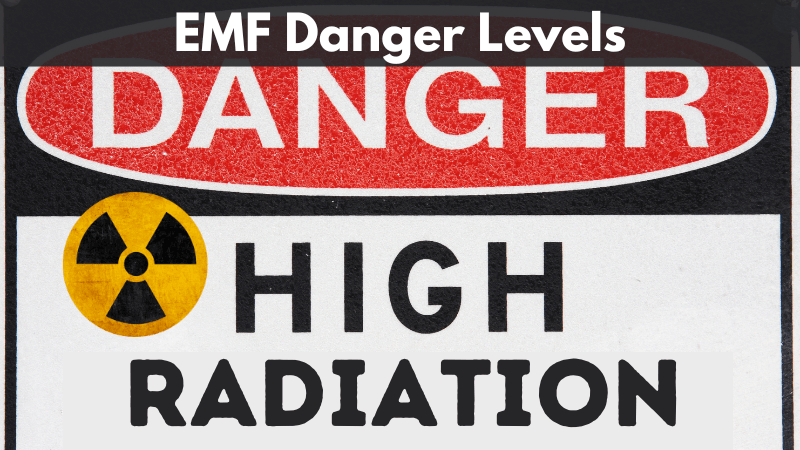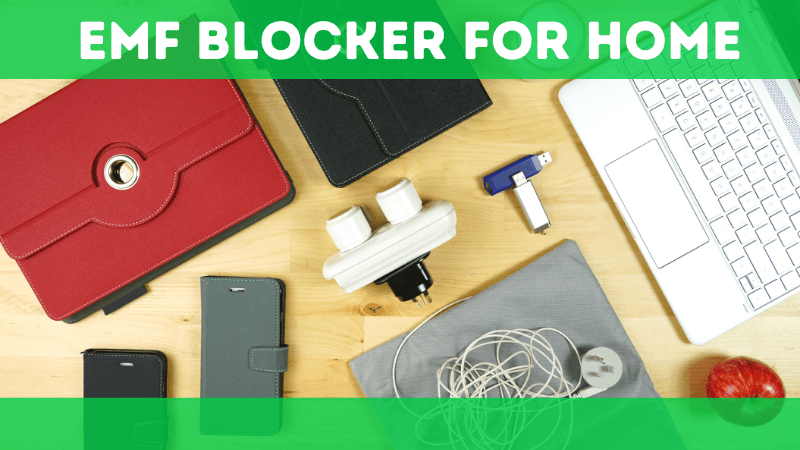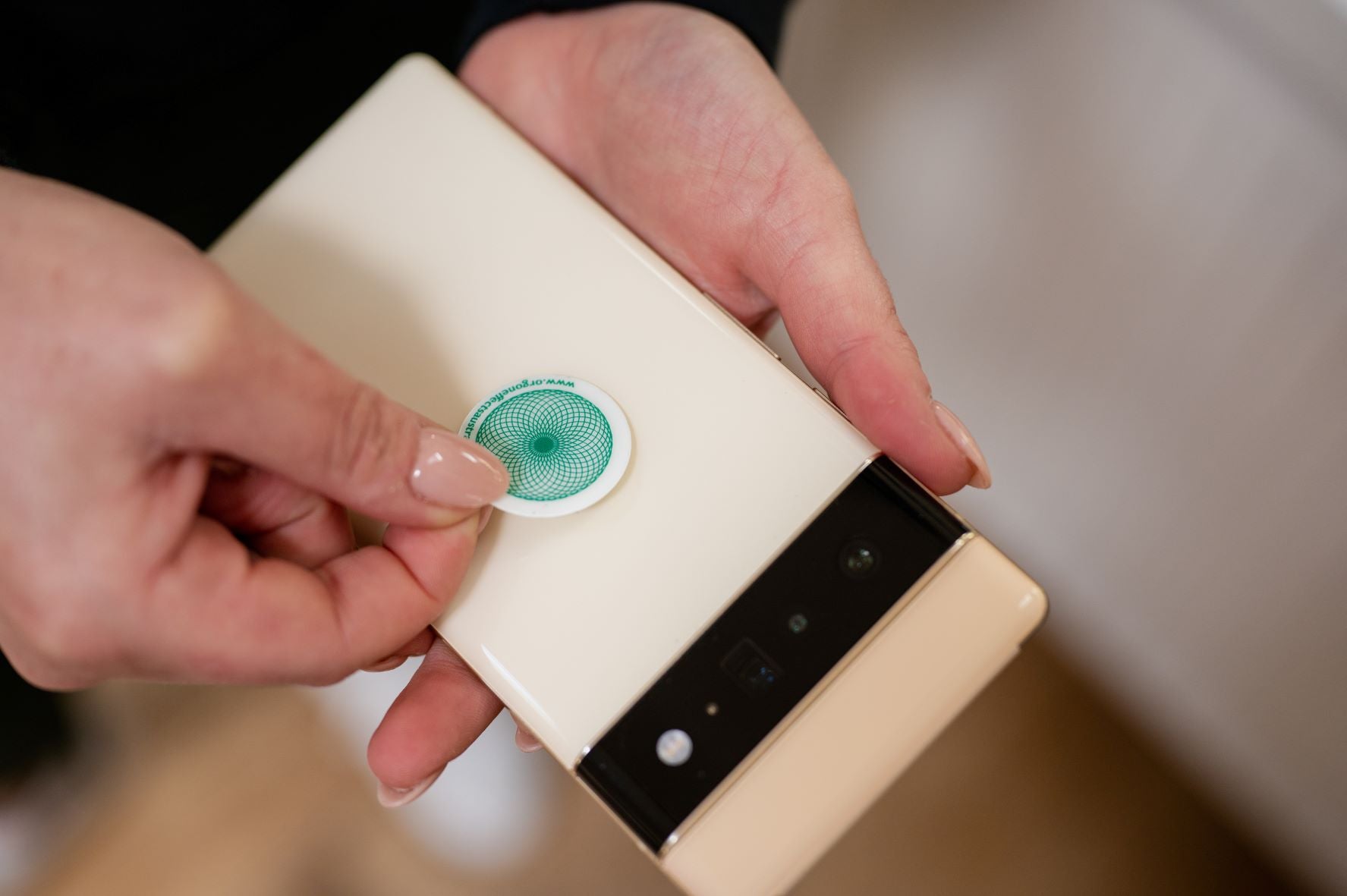Concerns about EMF radiation have increased in recent years. We know that virtually every electronic device in the home or office emits EMF radiation. We also know that exposure to it poses several threats to your health. For this reason, many people want to be able to monitor the level of electromagnetic radiation they are exposed to. How do you know which electronic devices give off radiation and how much they emit?
Professional EMF tools such as EMF meters are some tools you can use to monitor EMF radiation from any electronic device you are using or near. These tools can monitor your refrigerator’s radiation, tell you if your microwave is leaking EMFs, and even tell you how much radiation your wireless router is exposing you to.
There are several EMF meters you can choose from depending on your needs as a user. Different types of EMF meters monitor different types of radiation. So if you want to monitor a specific type of EMF radiation, be sure to select the right tool.
There are electromagnetic field meters that monitor low-frequency EMF radiation emitted from power lines, while other types of meters monitor high-frequency radio waves from microwave ovens or Wi-Fi routers. A good electromagnetic field meter should be able to monitor the three (3) main types of electromagnetic radiation: electric field, magnetic field, and radio frequency (RF) radiation.
In this article, you’ll learn how to monitor radiation – EMF and how to protect yourself and your loved ones. If you want to protect yourself and your family from the harmful effects of EMF radiation, we encourage you to browse through our collection of EMF protection products. We have hand-selected products that we know are high quality and designed to keep you and your loved ones safe.
What is an EMF Meter?

EMF stands for the electromagnetic field. Therefore, an EMF meter can monitor the electromagnetic field in a specific area. Specifically, an EMF meter provides an accurate measurement of electromagnetic waves in the particular area that the user is monitoring.
In other words, EMF meters measure radiation. They are popular tools on the job site and inside the home. They can find discrepancies in the electromagnetic field which may indicate electrical problems or incorrect wiring.
Without these devices, we would have to guess where the issues are occurring. And we would end up suffering long-term damage from EMF radiation exposure without even realizing it. In general, EMF meters can help us prevent dangerous radiation that we could not detect otherwise.
What are EMF Measurements?
EMF measurements refer to the amount of electromagnetic fields surrounding an EMF sensor or probe. An EMF meter is a special type of sensor. An EMF meter can therefore perform EMF measurements.
In fact, the device uses the measurement of the surrounding electromagnetic fields to distinguish between high and normal levels. Simply put, the meter calibrates itself to its surroundings to detect any abnormal readings.
To obtain accurate results, the user of one of these meters must ensure that the probes do not interrupt the electromagnetic field. When this happens, coupling and reflection can follow. This will alter the measurement results and render the meter ineffective.
When properly used, EMF monitors and meters can perform two types of EMF measurements:
- Frequency selective measurements
- Broadband measurements
We can locate broadband measurements using a broadband probe. Typically, these devices have three separate diode array detectors. Broadband meters can detect a variety of signal frequencies.
Conversely, frequency-selective measurements allow the user to test specific signal frequencies. These tools have a field antenna and a spectrum analyzer or receiver. The analyzer/receiver is the part that can test several frequencies.
EMF meters can respond to electromagnetic fields on one or three axes. Triaxial EMF meters can display measurements in three directions simultaneously.
Basics of Monitoring EMF Radiation

To understand what we are doing in the first place, we need to talk a bit about what electromagnetic radiation is.
Electromagnetic fields, or EMFs, are technically physical fields generated by electrically charged objects. They are divided into three (3) types:
- Electric field
- Magnetic field
- Radiofrequency
When you are exposed to electromagnetic radiation, especially for long periods, it has harmful biological effects. From laptops and cell phones to microwave ovens and smart meters, electromagnetic radiation is all around us.
We often categorize EMF radiation by both its strength and frequency. So you hear terms like ELF (extremely low frequency), which is just one part of the frequency spectrum.
Strength
When we monitor EMF radiation, we generally monitor the strength of the radiation, not the frequency. Strength is measured in different ways depending on where you live and the type of EMF radiation.
Frequency
The importance of understanding the frequency of electromagnetic radiation is that we can sometimes use the frequency to determine what the source might be. Different sources of radiation emit EMF radiation at different frequencies.
Let’s talk a bit about the strength and frequency of EMF radiation so that we can fully understand what we are monitoring.
Monitoring Frequencies

Frequencies are almost always monitored and reported in Hertz (Hz), which is basically the number of cycles per second. One common place you come across is your VHF radiation, which tells you the exact frequency you’re tuning to. If you’re listening to 95.3, your radio is receiving the signal at 95.3 megahertz (95,300,000 hertz).
This signal is picked up by your radio and the frequency is converted into audio that you can hear. However, when it comes to reading EMF radiation, the frequency of the signal we see with the RF (radiofrequency) setting of our electromagnetic field meter only really helps us understand the source, not so much the strength.
This is also very useful to determine if there is dirty electricity in the wiring of your house since this dirty electricity gives off a frequency. Okay, now that we understand a bit more about what EMF radiation frequencies mean, let’s talk a bit more about the strength of electromagnetic radiation.
Monitoring the Strength of EMF radiation

Almost all EMF meters are so-called Gauss meters, which means they can measure magnetic fields. In general, the higher the quality of the EMF meter, the more accurately you will see the strength of the radiation monitoring.
In North America, these electromagnetic field meters generally display the strength of the magnetic field, which is represented in milligauss (mG). In the European Union and other parts of the world, it is usually displayed in microtesla. You should opt for an EMF meter that can display to at least 0.1 milligauss or 0.01 microtesla.
Some cheap EMF meters don’t go below 1 mG with their readings, which doesn’t help people who are very sensitive to EMF radiation, as much lower amounts can affect them. The other field, the strength of which we measure with EMF meters, is the electric field radiation. This is usually measured in volts per meter.
Now that we understand the basics, let’s get to the more practical stuff.
How to Monitor Radiation – EMF: the Practical Guide
There are a ton of EMF meters on the market, but the best ones are those that monitor all three types of electromagnetic radiation:
- Radiofrequency
- Electric field
- Magnetic field
For this reason, we recommend the Trifield TF2 because it’s so easy to use and understand. However, the steps should be easy to follow no matter which EMF meter you use.
Conduct a General Survey of the Area
First, we want to measure a single part with our EMF meter. Let’s start with your living room. We need a notepad and a pen and our EMF meter. First, put your EMF meter on the magnetic field setting.
We recommend you start with magnetic fields because they are present in almost every electronic device around us. For instance, your laptop will give off a surprising amount of magnetic field radiation when you approach it. Hold the EMF meter in front of you and walk slowly while moving the device back and forth.
Once You Have Found a Source of Radiation
If you notice the digital reading, a beep, or a spike in the milligauss reading, move in the reading’s direction. Follow the readings until you locate the radiation source. If you found it, let’s assume it’s your fridge. Go ahead and read as you move around the source, then write down the source and average reading.
If what you’re measuring doesn’t have a wireless connection, you just need to get electric and magnetic field radiation measurements. Once you have the information written down in your notebook, go ahead with the sweeping.
After doing this several times and locating all sources of radiation in the area, be sure to write them all down. These pointers will help you determine later how to reduce your overall exposure. Whether it’s removing unnecessary sources or finding ways to shield yourself.
Pay Special Attention to the Areas Where You Spend the Most Time
Thanks to the growing library of electromagnetic radiation research, we know that the risk of exposure is cumulative. This means that the more radiation we are exposed to during our lifetime, the greater our risk. For this reason, we must pay particular attention to the areas where we spend most of our time when we’re monitoring EMF radiation.
This includes places like:
- your room
- your car (especially if you have a long trip)
- your favorite chair
- your workplace, Etc.
What About Wireless Devices?
Anything with a wireless aspect, such as a cell phone, laptop, smart meter, Bluetooth device, etc., we need to monitor RF emissions. So let’s assume we want to monitor the EMF radiation of our cell phone. Place what you are monitoring on a floor or table, or hold it in one hand. With your second hand, point the EMF meter at the cell phone and move it closer slowly. Start around one foot away, then move closer to the device and record readings as you get closer. RF emissions are almost always measured and reported in milliwatts per square meter (mW/m2).
Just Look at the PEAK Readings
The most important advice we can give you here is to only look at PEAK readings when monitoring RF emissions from wireless devices. For instance, the main reading can be 0.045 mW/m2, while the maximum reading can be 10.387 mW/m2. Obviously, that’s a big difference.
This is because the information sent by radio waves is sent in information packets. Instead of a constant stream of EMF radiation like we see with electric and magnetic fields, radio waves emit constant pulses of radiation. This is especially important when monitoring something like your smart meter.
Some people make the mistake of thinking that the radiated emissions are weak, either because they haven’t waited long enough for a packet to be transmitted and the reading spikes, or because they haven’t looked at the PEAK reading.
EMF Protection Tips

The first step before taking any action is knowing what you are up against. Use a good quality EMF meter to get accurate EMR exposure results. Recommended SAR safety levels for all EMF radiation should be 1 mG. Some tips you can use to protect yourself are:
Use Cell Phone & Wi-Fi EMF Protector
The Phone Computer Bluetooth Wi-Fi Radiation Protection can be attached to the back of cell phones (or cases), Bluetooth, computers, iPads, baby monitors, and other wireless devices. This product is more effective than any other product which acts as a “shield” as they harmonize and neutralize the harmful effect, rather than attempting to block it - which only leads to generating more radiation.
Invest in Wearable Protection
Orgone pendants, necklaces, and bracelets are a protection option when away from your other protected areas. These jewelry pieces generate healthy life-giving Negative Ions and work continuously to eliminate or cancel out hazardous Positive Ions, which makes these radiation protection jewelry very effective and totally unique.
Plant EMF Absorbing Plants and Trees
Don’t forget to plant EMF-absorbing trees and shrubs around your house. Adding these plants not only makes your living space more attractive, but it also reduces the effects of EMFs. Trees do not block electromagnetic fields, but they do weaken the radiation that passes through them. Cherry and pine trees are most effective at reducing the effects of radiation signals before they reach your home.
Use indoor plants to reduce exposure to electromagnetic radiation. Plants absorb toxins from around your home and purify the air in your home. These plants help neutralize the toxic ions given off and replace them with safer ions that plants naturally discharge.
Invest In Orgone Generators
If you live, work, or go to school near (within 2 miles) a cell tower, the Dome Schumann Resonance Orgone Generator is considered useful protection. If the tower is close to you, try placing a Dome Schumann Resonance Generator at each end of the sill/window sill closest to the towers.
Watch Your Diet
Although this method cannot stop exposure to EMF radiation, it can help attenuate the harmful effects. Eating foods with specific nutrients can help you reduce the dangers of EMF exposure. Also, you can take supplements to reduce the effects of radiation.
Invest in an EMF Orgone Blanket
If a family member suffers from night terrors, they can wrap themselves in protection with our Bamboo Orgone Blankets. These environmentally friendly Bamboo Orgone Blankets are infused with octaves of frequencies that create and bring into being a powerful Negative Ion resonance used for energy healing or Orgone Therapy, making them the best in natural sleep aids.
Final Thoughts on How to Monitor Radiation – EMF
The increasing concentration of EMFs in our environment is a major problem. And it is important that you, as the recipient of this EMF pollution, take preventive measures before the EMF pollution can harm you and your family. These measures include EMF monitoring, using EMF shielding products, and changing your lifestyle so that modern technology works to improve your life, not worsen it.
And when you start doing those things, consider that part of the problem is solved. We say this because EMFs are not the only risk associated with modern technology. Experts say prolonged use of technology can harm you psychologically, physically, emotionally, and mentally.
Keeping a GeoClense EMF and Earth Radiation Harmonizer in your bedroom, bathroom, garden, car, or workspace can detoxify the entire area around the room. If you have any smart devices in your home like TV, Wi-Fi routers, computer, fridge, etc., it is highly recommended to keep the Dome Schumann Orgone Generator close to these devices as these devices emit the maximum amount of EMF, Radiofrequency, and Extremely Low Frequency. Buy one today and stay away from negative energies.




